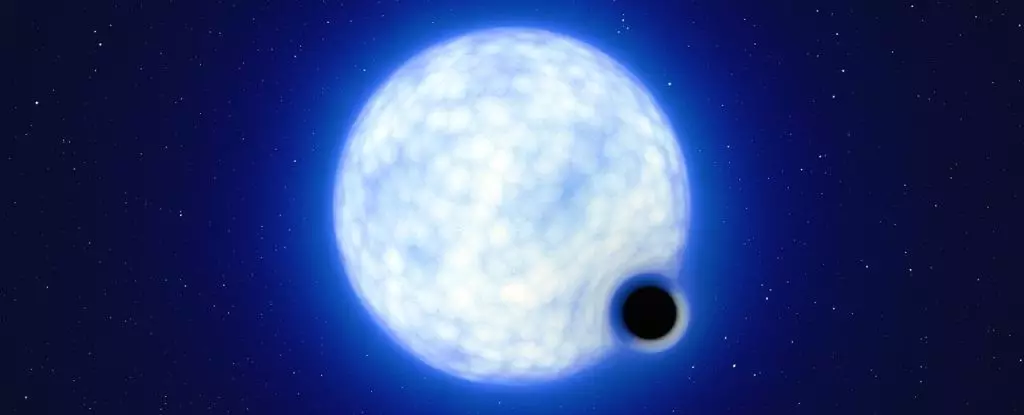In the vastness of the Universe, the death of massive stars is a common occurrence. These stars, when they run out of fuel, typically end their lives in a grand explosion known as a supernova. However, recent studies have revealed an unsettling mystery – some massive stars seem to have disappeared without a trace. This perplexing phenomenon has left astronomers scratching their heads, wondering where these stars have gone.
A groundbreaking study led by astrophysicist Alejandro Vigna-Gómez has shed light on this enigma. Vigna-Gómez’s international team discovered a binary system named VFTS 243 in the Large Magellanic Cloud, comprising a black hole and a companion star. Surprisingly, this system displayed no signs of a supernova explosion, challenging existing models of stellar death. The absence of an explosion suggested a new, startling possibility – some massive stars may collapse silently into black holes, defying conventional understanding.
When a star more massive than 8 times the Sun goes supernova, the process is typically chaotic. The star’s outer layers are violently ejected, forming a nebula of dust and gas. Meanwhile, the core collapses to form a neutron star or black hole. However, in certain instances, as observed in the case of VFTS 243, the core may collapse directly into a black hole without triggering a supernova explosion. This silent demise challenges astronomers’ preconceptions about the fate of massive stars and raises intriguing questions about the mechanisms of stellar evolution.
VFTS 243, with its enigmatic black hole and companion star, offers a unique opportunity to study the formation of black holes through total collapse. This system, approximately 7.4 million years old, presents a compelling case for stars bypassing supernova explosions and transitioning directly into black holes. The circular orbit of the black hole, coupled with its stable motion in space, suggests a lack of a significant kick from a supernova, reinforcing the theory of direct collapse into a black hole.
The findings of Vigna-Gómez and his team mark a paradigm shift in astrophysics, challenging established theories of stellar evolution. The notion that massive stars can silently transform into black holes without a supernova explosion has significant implications for our understanding of the life cycle of stars. VFTS 243 stands as a pivotal case study in reshaping our current understanding of black hole formation and the enigmatic disappearance of massive stars.
The recent discovery of the binary system VFTS 243 has unveiled a new chapter in the saga of stellar evolution. The disappearance of massive stars without a supernova explosion poses intriguing questions about the fate of these celestial giants. As astronomers delve deeper into the mysteries of the cosmos, the enigma of vanishing stars serves as a poignant reminder of the boundless wonders and complexities of the Universe.


Leave a Reply